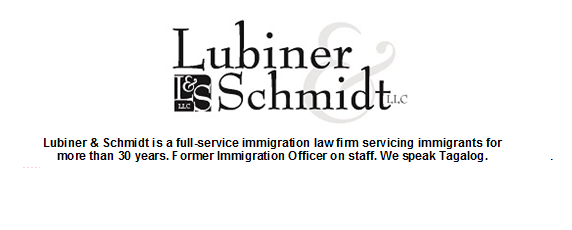Organizations’ ‘best practices’ from educating members to potluck meetings (Part 2)

Candice Sering leads fellow FilAm activists at an anti-war rally protesting U.S. military intervention in Syria.
How do you motivate members to attend meetings? Any best practices to share?
LEDY ALMADIN: It has to start from the leader. It’s the leader’s job to motivate and get the team excited to achieve

Ledy Almadin (standing) and her teen daughters distribute fliers, answer questions about PAFCOM during a networking event organized by UniPro.
LUMEN CASTANEDA: This is the hardest job of a leader, motivating members to attend meetings. If you
don’t have an agenda the members are interested in, they don’t come. One thing I used to do is make the meeting interesting by having a sharing of quotations at the start and a raffle of something like a brooch, a book, a scarf, or anything worth owning. Having a special guest to talk about something related or unrelated to the agenda also helps. But as I have experienced, the committed ones do not need any motivation to come. They will be there if they are not sick or if they have nothing very important thing to do or if there is no emergency.
YVES NIBUNGCO: We keep our membership motivated by conducting political education on various topics that help them deepen their understanding of issues affecting our community. We also constantly immerse ourselves in the community that we serve, particularly among the most marginalized. We also make sure that we’re engaging their interest by taking on campaigns that genuinely and concretely improve the community’s welfare. This is to remind and to really help our membership internalize the purpose of our organization, that is to serve the people.
CANDICE SERING: We ensure that motivation to learn more about Filipino history and culture, as well as the conditions in the country, is continual. We also focus on cultural work and conduct educational discussions to help our membership deepen their understanding of Philippine society through both community dialogue and creative means. By engaging members in ongoing education, political actions and cultural work, they will remain active in the organization.
VIVIAN TALAMBIRAS-CRUZ: It is important to make the members feel that they belong to a cause that is greater than themselves. Belonging to a community can make an individual feel more important by giving back to society. One of the ways that motivates group members to come is to have potluck gatherings at a home or dinner at a restaurant. As you know we Filipinos love to eat so what’s better than having a meeting when food is available! It is important that the members know that they are amongst “friends” and just be comfortable being there and not feel that they “have to be there.”
How does a Constitution/By-Laws help an organization?
Almadin: It is the foundation of the organization that guides where and what the organization should do. That’s where the core mission should be. It helps the organization to stay focused in its mission.
Castaneda: The Constitution/By-Laws is important because it serves as the guide to the existence of the

Also at UniPro’s networking event, Lumen Castaneda invites teachers who may be interested in joining UNIFFIED.
Nibungco: Constitutions serve as the reference for the purpose and structure of the organization. It helps ensure that the organization’s purpose and structure is carried out. This is also an important tool to keep the organization in check whether it is serving its purpose or not and hold its members and leadership accountable. It must also reflect the changing purpose and needs of the organization or, more importantly, the needs of the community it’s supposed to serve.
Sering: Constitution/By-Laws are important in providing a foundation on how an organization operates. By-Laws are key in particularizing a broader Constitution to meet the needs of specific chapters.
Talambiras-Cruz: There are parameters and boundaries to go by to help everyone reach a common goal and be on the same page. By-Laws give guidelines to facilitate and accomplish projects.
Can an organization survive without a Constitution?
Almadin: No. If there’s none in existence, then the organization becomes just a social gathering among friends doing whatever they feel like doing. There’s no guidance toward a goal.
Castaneda: I have heard of some organizations without the Constitution/By-Laws but I am not sure how they operate. I know of one who existed for some time before they formed their own Constitution, but that organization does not exist anymore.
Nibungco: As long as the purpose of the organization is clear and has committed members, it can survive.

Yves Nibungco speaks at a meeting organized to discuss the community’s response to the Mamasapano incident in the Philippines.
Sering: The survival of an organization without a Constitution/By-Laws depends on the character and objectives of the organization. For us, as individual chapters as well as the GABRIELA USA national alliance, we definitely have and follow our Constitution/By-Laws. This unites members of the organization as far as what our principles and objectives are and how we implement our organization’s work.
Talambiras-Cruz: I believe that no matter how small or big an organization is, it is important to have a set of laws to go by otherwise there may be power struggles and subjective decisions.
What are some of the frustrations and challenges about community organizing?Almadin: It becomes frustrating or challenging when there are members or officers who are not focused on the organization’s mission. Instead, they are more focused on their own personal interest or agenda.
Castaneda: When I started joining community organizations, I was lucky to have joined
organizations in existence already. But when I founded UNIFFIED, it was solely put on my shoulder to organize. Still, I only had to register it as a 501(c) 3 and work for its exemption. The teachers were already there and we had to recruit some new ones to add and make the organization bigger. On my part I did not encounter any challenges in its formation.
Nibungco: There are many challenges in community organizing. In the Philippines, community organizers face state repression in the form of extra-judicial killings, enforced disappearances and illegal arrests by government forces. In the U.S., government repression still exists in the form of surveillance and brutal dispersal of protest actions. On a more practical view, there is always that constant challenge of making sure that new members are developed and trained to become the next line of leaders that will take on the growing political tasks of the national democratic movement.
Sering: Not having enough hours in the day! Our organizing is particularly incredible because of its local, national and international character. We are definitely working overtime. As a grassroots organization, we do not have the luxury of a home base office just yet! Resources and funding are always a challenge as they are often limited.

Vivian Talambiras-Cruz with pop singer Joey Albert at a 2012 fundraising concert to benefit the projects of the Assumption Alumnae Association Abroad.
Talambiras-Cruz: Different schedules, different agendas, goals, personality clashes and funding. It is frustrating when people make commitments and don’t follow through especially when much of the collaborations are centered around giving back to the community. When strong Type A personalities work on one aspect of a project, basically personality clashes, it is important to define the goal clearly so everyone works toward the common goal and not their individual egos.
Part 1: 5 leaders share thoughts on organizing in a diverse, at times discordant, FilAm community












[…] Organizations’ ‘best practices’ from educating members to raffles, potluck meetings (Part … […]